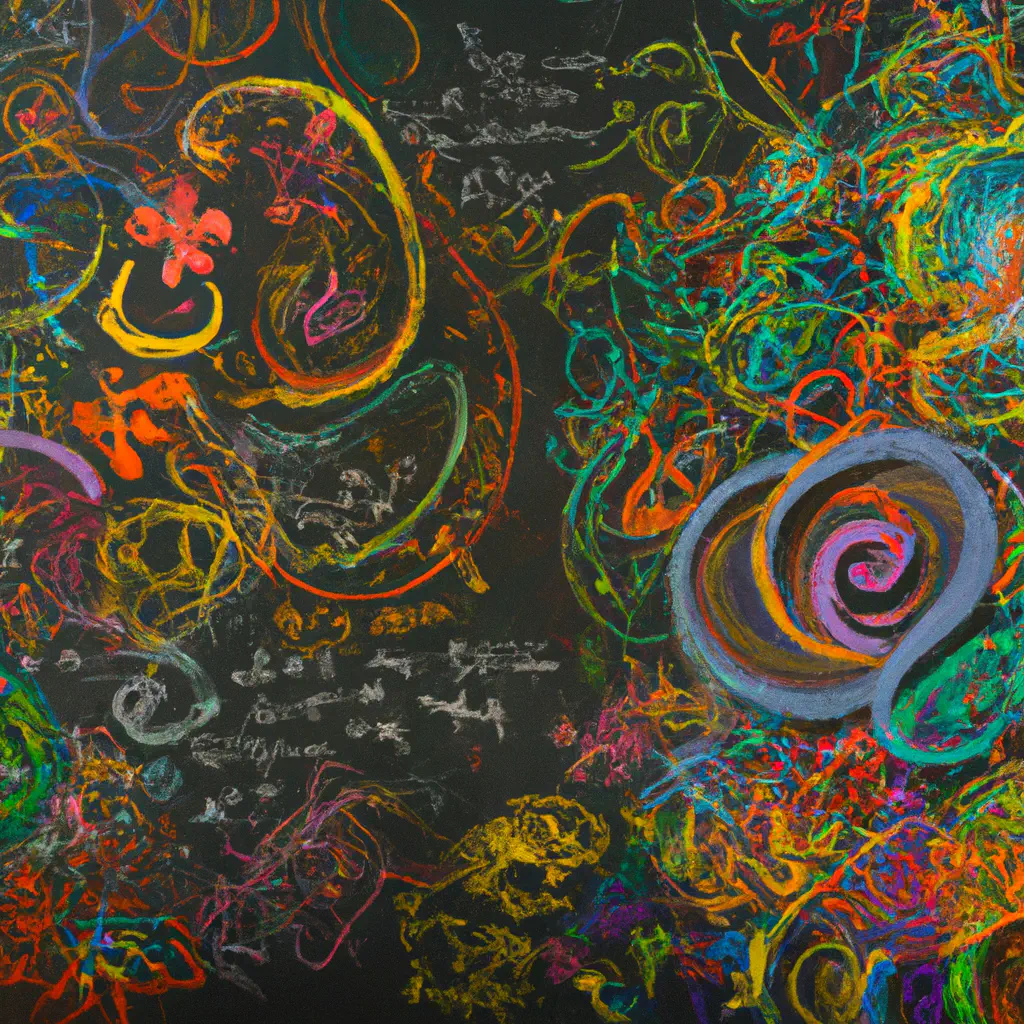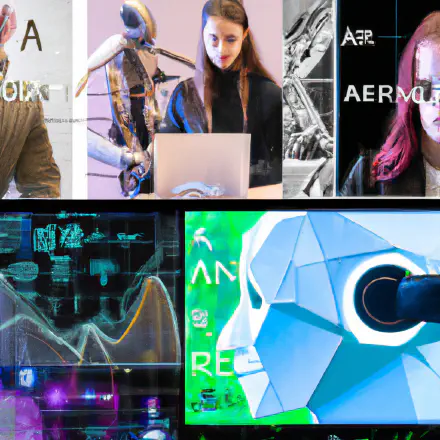
In today’s fast-paced society marked by constant change and innovation, two crucial skills stand out as driving forces - logical thinking and creativity. Although these two abilities may seem at opposite ends of the spectrum, their combined implementation can lead to ground-breaking solutions and imaginative problem-solving techniques. This blog will delve deep into these distinct yet complementary abilities, exploring how the unification of logic and creativity can unlock a plethora of opportunities and pave the way for unexplored paths. Grab a cup of tea or coffee, sit back, and allow us to guide you through the fascinating journey of merging the seemingly separate realms of logical thinking and creativity.
In upcoming discussions, we will dissect the basics of logical thinking and creativity, examine their relevance, and illustrate their practicality with everyday examples. We will draw the line connecting these two aspects, elaborating on their intersection points and the importance of their collective application for innovative problem solving.
“Logic will get you from A to B. Imagination will take you everywhere.” - Albert Einstein
Through real life case studies, we also aim to showcase successful projects that adopted a fusion of these approaches. We would delve into the unexpected components of this merger, and the surprising outcomes it often manifests.
We will not stop here. We aim to provide you with techniques that can help you nurture logical thinking and boost creativity. It is often perceived as a challenge to harness these attributes, given their conceivable disparity, and we expect to change that perspective.
In our closing notes, we will summarize our discussion, underline crucial points, and highlight the impact of merging logical thinking and creativity in problem-solving and innovation. We hope this exploration encourages you to think logically and creatively, inspiring you to approach challenges and opportunities with a fresh perspective. Prepare for the journey into this multifaceted world of logic and creativity. Let’s get started!
Section One: Understanding Logical Thinking
Logical thinking, often regarded as reasoning, enters into every facet of our life. We employ it from decision-making processes to analytical reasoning and problem-solving; it serves as the backbone for coherently understanding and interpreting the world around us.
Definition of Logical Thinking
Logical Thinking is a process that involves mental activities like reasoning, making inferences, analyzing facts, and solving problems. It utilizes a systematic and schema that helps in determining the truth or falsehood of any proposition. In simpler terms, it’s the ability to reason logically and rationally about different situations or issues.
“Logical thinking involves mindfully connecting the dots between concepts and facts to understand the larger picture.”
Importance of Logical Thinking
Logical thinking is a highly valuable and transferrable skill. It plays a crucial role in making decisions and solving problems, mainly because it:
- Encourages critical thinking and analysis, aiding in making well-informed decisions.
- Helps in identifying and solving problems effectively by understanding the situation better.
- Helps in distinguishing between valid and the invalid reasons/arguments.
- Aids in the clear and effective communication of ideas.
Examples of Logical Thinking in Everyday Situations
There are countless examples of logical thinking in our daily lives. A few are:
-
Household Management: This includes tasks like budgeting, scheduling, meal planning, etc. Logical thinking helps to keep everything running smoothly. For instance, when budgeting, you use a logical approach to manage, allocate, and save money by identifying and prioritizing essential expenses over non-essential ones.
-
Workplace Problem-solving: Logical thinking helps identify and understand problems, strategize, and find effective solutions. Let us consider you’re a project manager; logical thinking would aid in project planning, identifying potential roadblocks, and devising strategies to overcome them.
-
Academic Studies: Logical thinking is vital in comprehending and interpreting data, theories, and principles. For instance, mathematics, coding, and scientific research all require logical thinking to understand problems, form hypotheses, and find solutions.
Our brains meticulously chart and map information using logical connections to help us navigate through life. Recognizing its importance and consciously improving this skill can amplify our decision-making and problem-solving capabilities, helping us lead a more organized and better planned, directed life.
Section Two: Understanding Creativity
To discuss the intersection of logical thinking and creativity, it’s vital to understand what creativity means and why it’s important.
Definition of Creativity
Creativity involves the ability to discover new and original ideas, connections, or solutions to problems. It’s the ability to generate ideas or possibilities that may be useful in solving problems and communicating with others. Creativity transcends traditional ideas, rules, patterns, relationships, and the like, to create meaningful new ideas, forms, methods, and interpretations. As a mental process, it encompasses inventiveness, innovation, lateral thinking, and problem-solving.
“Creativity is intelligence having fun” - Albert Einstein
Importance of Creativity
Creativity is crucial for numerous reasons. It serves as a means of expressing oneself and can help people feel more fulfilled and satisfied. In the workplace, creativity can lead to new ideas and innovation, often resulting in the development of new products, processes, and services.
Furthermore, creativity can help in problem-solving. When faced with challenges, creative thinking helps generate a number of potential solutions, enabling one to navigate through complex situations more effectively. It encourages us to see things from different perspectives, offering greater versatility to adapt to change.
From a societal perspective, creativity aids education, culture, and even economic growth. It fosters cultural enrichment, personal growth, improved learning techniques, and can significantly contribute to society’s overall development.
Examples of Creativity in everyday situations
Creativity isn’t only limited to the domain of artists, writers or musicians. It manifests in everyday situations.
- Cooking: Coming up with a new recipe or improvising based on the ingredients available requires creative thinking.
- Problem-solving: When faced with an issue at home or work, devising a unique solution to that specific problem involves creativity.
- Communication: Communicating a complex idea in a simple, understandable manner requires a creative approach, especially in teaching.
- Innovation: Coming up with a new app, a product, a business model or system requires intense creative thinking in order to conceptualize, design, and implement it.
In conclusion, creativity is more than an attribute, it’s a skill that enhances our lives and drives us to innovate and solve problems in unique ways. Following, we will look at how creativity intersects with logical thinking.
Section Three: The Intersection of Logic and Creativity
One might think that logical thinking and creativity lie at opposite ends of the cognitive spectrum. However, in reality, these two ways of thinking often intersect and can complement each other in surprising ways.
How Logical Thinking and Creativity Relate
Creative thinking is often viewed as divergent–bringing together a multitude of ideas in a free-flowing, unrestrained manner. On the other hand, logical thinking is often seen as convergent–it follows a systematic path to arrive at a single best solution to a problem. These definitions suggest that these two ways of thinking are mutually exclusive. However, when we delve deeper, we find that creativity often requires a degree of structure and logic, and effective logic often necessitates outside-the-box thinking.
Creativity can be thought of as the generation of novel and unique ideas, while logical thinking can be viewed as the structuring and validation of these ideas. One without the other might result in either a maelstrom of unstructured thoughts or a rigid, uninspiring approach to problem-solving.
“Logic will take you from A to B. Imagination (Creativity) will take you everywhere.” - Albert Einstein
Importance of Combining Logical Thinking and Creativity in Problem Solving
The real power lies in the integration of logical thinking and creativity. Together, they can revolutionize our problem-solving capacity. Where creativity helps in ideation, logical thinking aids in the execution of those ideas. This intertwined relationship illuminates the pathway for innovative solutions to complex issues.
Case Study: Successful Projects that Combined Logic and Creativity
Let’s consider Apple–a company renowned for integrating logic and creativity.
In 2007, Apple launched the iPhone, a product that forever changed the landscape of mobile devices. The iPhone was not merely a product of creative thinking. It was a culmination of imaginative design (creativity) and ground-breaking engineering (logical thinking).
The design team conceptualized a sleek, user-friendly interface with one button - a creative, disruptive idea considering the QWERTY keyboards that dominated smartphones then. However, this idea wouldn’t have come to fruition without the logical thought processes of the engineering team, which worked out the technical nuances to transform this creative concept into a physical reality.
This example of Apple’s iPhone reflects that creativity and logical thinking are not only compatible but fundamentally interdependent for successful innovation. It’s the harmony of these cognitive abilities that allows for groundbreaking advancements and solutions.
In conclusion, rather than viewing logical thinking and creativity as opposites, we should view them as complementary forces. They are two sides of the same coin, both indispensable in the quest for innovation and problem-solving.
Section Four: The Unexpected Twist
When blending logical thinking and creativity, it is natural to face unpredictable outcomes or, as we call it, “the unexpected twist”. The fusion of these two diverse aspects can lead to unanticipated results, which can be both intriguing and challenging.
The Nature of Unexpected Outcomes
Sometimes, when we combine logic and creativity, our expectations can be blown out of proportion by the unanticipated results. For instance, a mathematician merging several equations logically and then deciding to add a creative approach to solve it might end up with an unexpected solution.
On the contrary, an artist might incorporate geometric shapes in their abstract painting based on logical principles and wind up with a piece far beyond their initial comprehension. These outcomes do not necessarily equate to failure; instead, they showcase the extent to which creative thinking can complement or even extend logical thought.
While these twists can surprise us, they also provide extensive learning opportunities. As the famous saying goes:
“When something does not go right, go left.”
Real-Life Scenarios
Let’s consider a real-life scenario — the inception of the post-it note by 3M. The intention was to create a super strong adhesive. But instead, Spencer Silver, the scientist behind it, ended up with a weak, repositionable adhesive. This accidental invention became a success when another scientist, Art Fry, creatively used this sticky note as a bookmark for his hymnbook.
This instance deploys both logical thinking and creativity. Silver logically thought of creating an adhesive, while Fry creatively applied it as a bookmark. This unexpected twist led to the creation of an immensely popular item.
Navigating Through The Unexpected Twists
While unexpected twists may initially seem off-putting, it is essential to view them as potential opportunities, extended discoveries, or stepping stones towards innovation.
Handling unexpected results requires flexibility, open-mindedness, and the courage to embrace the unknown. Instead of perceiving them as failures, consider them as detours pushing you towards your destined route.
Keep these key points in mind while navigating through unexpected twists;
- Stay curious: The more you question the outcome, the better you understand it.
- Be open to learning: Embrace the new knowledge that comes with the unforeseen results.
- Adjust and Adapt: Readjust your strategies and adapt to the new situations swiftly.
- Turn failures into lessons: Consider every failure as a stepping stone towards success.
Remember,
“The measure of intelligence is the ability to change.” — Albert Einstein
Every unexpected twist is a veiled opportunity that demands your innovation to unveil its true potential. The amalgamation of logic and creativity not only enables us to create unique solutions but also equips us to welcome and navigate through unexpected outcomes.
Section Five: Cultivating Logical Thinking and Creativity
In this section, we delve deeper into the process of cultivating and honing both logical thinking and creativity. Like muscles in the body, these cognitive faculties can be trained and strengthened with consistent practice and the right methodology.
Cultivating Logical Thinking
Logical thinking, at its core, is founded on clear, rational, and systematic thinking. It’s about methodically processing information, making connections and deductions, and arriving at sound conclusions. Luckily, there are several approaches you can adopt to fine-tune your logical thinking capabilities.
-
Problem-solving exercises: One of the best methods to enhance your logical thinking is to immerse yourself in problem-solving exercises. These could range from simple puzzles, games like Sudoku or chess, or more complex challenges like coding problems and mathematical conundrums.
-
Critical reading: Reading and analyzing complex pieces of writing, especially those that require a certain degree of comprehension and analysis, is another method. Reading philosophy or scientific papers, for example, can aid the development of logical thinking.
-
Mind mapping: This is a tool that promotes clear thinking and idea organization. By breaking down complex problems or ideas into smaller parts, you form a map of interrelated concepts, making logical connections more apparent.
Cultivating Creativity
On the flipside, creativity can seem a little more elusive to cultivate, especially if you don’t inherently consider yourself an ‘imaginative’ individual. Nevertheless, everyone has a wellspring of creativity; all that’s needed is the right environment and stimuli to coax it out.
-
Engage in new experiences: Creativity blossoms when exposed to a variety of experiences—cultures, art forms, disciplines, etc. Novel experiences stimulate the brain and fuel imagination, leading to a surge of inventive thoughts.
-
Spend time in nature: A myriad of studies have shown that spending time in nature can significantly enhance creativity. Nature not only relaxes the mind but also stimulates it, providing a wealth of sensory stimuli that can spark new ideas.
-
Allow for free-thinking: One of the greatest enemies of creative thought is rigid barriers. It’s important to designate periods where you allow your mind to wander freely without any constraints—a practice known as free-thinking or free-writing.
Benefits of Harnessing Both Attributes
The integration of logical thinking and creativity isn’t just beneficial—it’s vital for holistic cognitive development. Logical thinking and creativity are two halves of a greater whole; together, they elevate thought processes, enrich problem-solving abilities, improve decision-making, stimulate innovation, and promote resilience.
In summary, fostering both logical thinking and creativity broadens the spectrum of one’s cognitive capabilities. Not only does it make problem-solving more effective, but it also makes the process more enjoyable and rewarding, offering unexpected insights and innovative solutions. Cultivating these two complementary aspects of our intellect promises personal, academic, and professional growth. The journey may be challenging, but rest assured, it’s a worthwhile endeavor.
Conclusion
As we draw to a close on our exploration of logical thinking and creativity, it’s clear that these two elements are fundamental keys to innovation in any field. Logical thinking, with its emphasis on critical analysis, helps us peel back layers of a problem, understand its root causes, and plan effective solutions. On the other hand, creativity lets us think outside the box, bringing fresh perspectives and new ideas to the table.
Throughout this blog post, we’ve examined in-depth the complexities of both logical thinking and creativity, how they intersect, and the unexpected outcomes this fusion can produce.
We’ve seen examples of how pivotal these two elements have been in successful projects and how they pose an advantage when embraced and harnessed properly. The harmonious coexistence of logical thinking and creativity isn’t just a nice theory; it’s a proven strategy with real-world validity.
However, it’s essential to remember that the interplay between these two can often lead to unexpected twists. Sudden, unforeseen outcomes are a part of both logical thinking and creativity. Embracing these twists, rather than resisting them, is perhaps one of the keys to true innovation.
The final part of our discussion focused on how to cultivate both logical thinking and creativity. It is not immediately obvious on how to enhance these traits, as they are largely inherent. Still, certain activities and exercises can tap into these hidden reservoirs and build upon them.
“The world belongs to the dreamers, the innovators, the doers…you need the clarity of logical thought, the audacity of creativity, and the courage to let them work together.”
In this fast-paced, ever-evolving world, problem-solving and innovation are no longer a luxury. They’re requirements for survival and success. And at the heart of these capabilities lie logical thinking and creativity. Harnessing both is not just a necessity for individuals but also for businesses, industries, and societies at large.
To conclude, one cannot underestimate the value of understanding, cultivating, and applying logical thinking and creativity in everyday situations. We hope that readers can begin to appreciate the interplay of these two amazing cognitive powers and use them with confidence.
Remember, the more we learn, the more we grow. The challenges of life and work might never stop, but with logical reasoning and a touch of creativity, neither will our ability to innovate and rise above them.
So, tell us about your experiences with logic and creativity. How have they affected your personal or professional life? As we drive towards a future defined by innovation, we look forward to hearing your stories, insights, and ideas.

